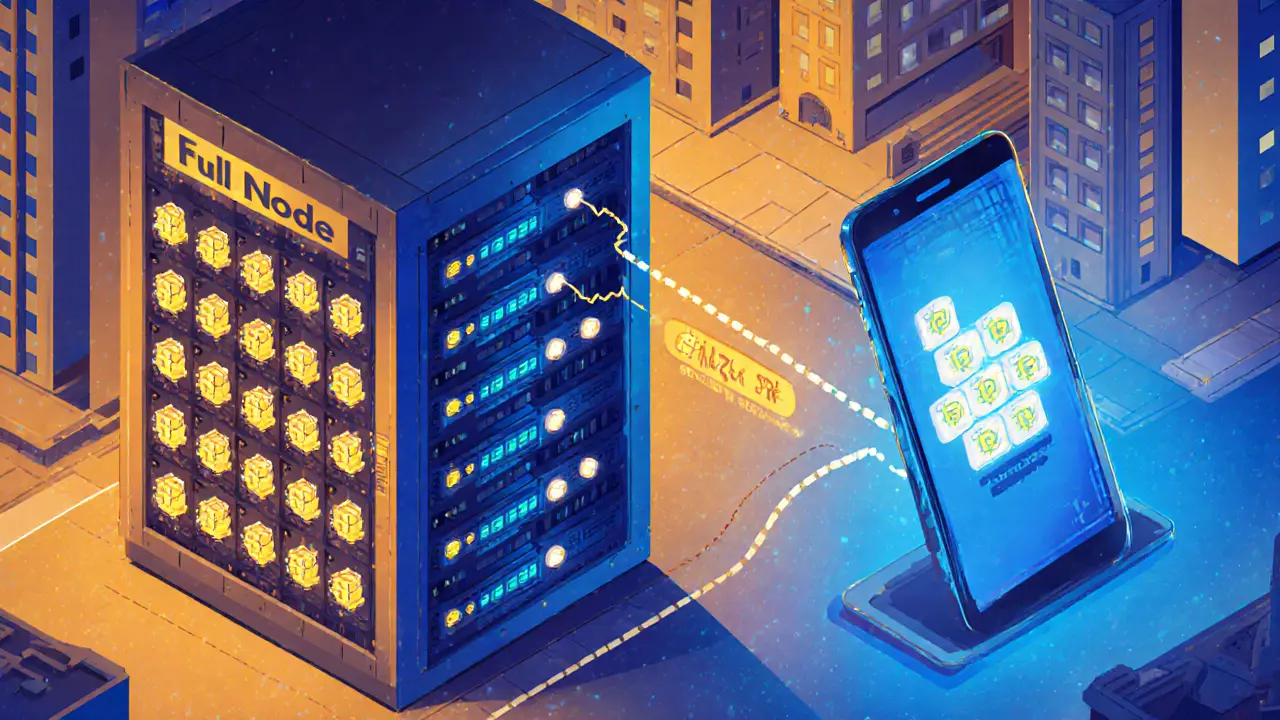Light Nodes: Quick Access to Blockchain Networks
When working with light nodes, software that connects to a blockchain without storing the full ledger. Also known as light clients, they let you check balances, send transactions, and browse data while using far less storage and bandwidth.
Unlike full nodes, servers that keep a complete copy of the blockchain and verify every block, light nodes rely on SPV (Simplified Payment Verification) to confirm that the data they receive matches the chain’s consensus. In practice, the light client asks a full node for a proof that a transaction is included in a block, then checks the proof using only block headers. This approach keeps the client lean, which is why most mobile wallets and browser extensions use light nodes. The trade‑off is a modest trust assumption: the light client must trust the full node that supplies the headers, though most networks mitigate this with multiple peer sources and random sampling.
Why Use Light Nodes?
Light nodes make blockchain technology feel like a regular app. They start syncing in minutes instead of days, use a few megabytes of storage, and drain far less battery on phones. Because they don’t need to download every transaction, developers can embed them into games, IoT devices, and DeFi dashboards without worrying about huge data downloads. The lean design also helps with decentralization, the distribution of power across many independent participants. Even users with modest hardware can stay connected to the network, which crowds out central points of failure. When you compare a light node to a full node, you’ll notice three key differences: storage size, verification depth, and network reliance. Light nodes store only block headers (a few hundred kilobytes) versus gigabytes of full transaction data. They verify transactions via SPV proofs rather than recomputing every consensus rule. And they stay online by asking nearby full nodes for the information they need. This model works well for Bitcoin, Ethereum, and newer chains that support light client protocols. For example, Ethereum’s eth‑light client lets you read smart‑contract state without downloading the entire state trie, while still allowing you to send signed transactions.
There are downsides to keep in mind. Because a light node trusts the full nodes that feed it data, a malicious peer could try to feed false proofs. Most clients defend against this by connecting to several peers and cross‑checking headers. Also, some advanced features—like full‑node indexing or running custom validators—aren’t available on a light client. As layer‑2 solutions and rollups grow, light nodes will become even more important: they can verify rollup proofs without touching the base chain’s entire history. If you’re curious about how to set up a light node, which wallets support them, or what security steps to follow, the articles below break everything down. From step‑by‑step guides to deep dives on SPV attacks, you’ll find practical tips that let you harness the speed and convenience of light nodes while staying safe on the network.
Full Nodes vs Light Nodes in Blockchain: What’s the Difference?
Explore the key differences between full nodes and light nodes in blockchain, covering storage, security, performance, use cases, and future trends.





